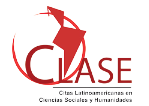Ambidiestreza organizacional e innovación: un estudio bibliométrico
DOI:
https://doi.org/10.5433/1981-8920.2021v26n3p352Palabras clave:
Ambidestreza organizacional, Innovación organizacional, Análisis de redes, BibliometríaResumen
Objetivo: El estudio buscó presentar un análisis bibliométrico del tema de la ambidestreza organizacional y la innovación, explorando el análisis de las redes de coocurrencia de palabras clave y la cocitación de referencias citadas.Metodología: La investigación siguió los siguientes pasos: diseño de la investigación con la definición del objetivo y de la expresión de búsqueda; elección de las unidades y de los tipos de análisis; investigación en la base de datos Scopus; obtención de redes mediante VOSviewer; cálculo de las métricas de las redes mediante Gephi; visualización e interpretación de los resultados.
Resultados: La red de coocurrencias mostró los conceptos de investigación más relevantes sobre el tema. La rede de cocitación permitió identificar los frentes de investigación.
Conclusiones: Se concluye que los tipos de análisis reconocen la fuerte relación entre los temas de ambidestreza e innovación y su influencia en la capacidad de respuesta de las organizaciones. En escenarios complejos de volatilidad y transformación, las organizaciones se ven cada vez más urgidas a adaptarse y aprovechar nuevas oportunidades, al tiempo que necesitan seguir siendo competitivas en los mercados en los que ya están insertas y donde la competencia es también cada vez más feroz.
Descargas
Citas
BALL, R. An introduction to bibliometrics - new development and trends. Cambridge: Chandos Publishing, 2017.
BASTIAN, M.; HEYMANN, S.; JACOMY, M. Gephi: an open source software for exploring and manipulating networks. In: INTERNATIONAL AAAI CONFERENCE ON WEBLOGS AND SOCIAL MEDIA, 3., 2009, San Jose. Proceedings […]. Palo Alto: AAAI Publications, 2009. p. 361-362.
BENNER, M.; TUSHMAN, M. Exploitation, exploration, and process management: The productivity dilemma revisited. Academy of
Management Review, v. 28, n. 2, p. 238-256, 2003.
BUI, Tat-Dat; TSAI, Feng Ming; TSENG, Ming-Lang; TAN, Raymond; YU, Krista Danielle; LIM, Ming. Sustainable supply chain management towards disruption and organizational ambidexterity: a data driven analysis. Sustainable Production and Consumption, v. 26, p. 373-410, 2021.
BURG, D.; SCHACHTER, E.; MEYER, P.; YUNG, J.; WERNICK, I.; CURRY, A. Loglet Lab. Versão 4.0, 2017. Disponível em: http://logletlab.com. Acesso em: 19 out. 2020.
CAO, Q.; GEDAJLOVIC, E.; ZHANG, H. Unpacking organizational ambidexterity: Dimensions, contingencies, and synergistic effects. Organization Science, v. 20, n. 4, p. 781-796, 2009.
CHEN, Yu-Heng; CHEN, Chia-Yon; LEE, Shun-Chung. Technology forecasting of new clean energy: The example of hydrogen energy and fuel cell. African Journal of Business Management, v. 4, n. 7, p. 1372-1380, 2010.
CIRIBELLI, M. C. Como elaborar uma dissertação de mestrado através da pesquisa científica. Rio de Janeiro: 7 Letras, 2003.
ERNST, H. The use of patent data for technological forecasting: the diffusion of CNC - technology in the machine tool industry. Small Business Economics, v. 9, n. 4, p. 361-381, 1997.
EVERS, N.; ANDERSSON, S. Predictive and effectual decisionmaking in high-tech international new ventures: a matter of sequential ambidexterity. International Business Review, v. 30, n. 1, 2021.
FRANKLIN, J.; JOHNSTON, R. Co-citation bibliometric modelling for S&T and R&D management. In: VAN RAAN, Anthony F. J. Handbook of Quantitative Studies of Science and Technology. Amsterdam: North Holland, 1988. p. 325-389.
GIBSON, C.; BIRKINSHAW, J. The antecedents, consequences, and mediating role of organizational ambidexterity. Academy of Management Journal, v. 47, n. 2, p. 209-226, 2004.
GOUVEIA, F. C. Altmetria: métricas de produção científica para além das citações. Liinc em Revista, v. 9, n. 1, p. 214-227, 2013.
GRIFFITH, B.; SMALL, H.; STONEHILL, J.; DEY, S. The structure of scientific literatures II: Toward a macro- and microstructure for science. Science Studies, v. 4, n. 4, p. 339-365, 1974.
GUPTA, A.; SMITH, K.; SHALLEY, C. The interplay between exploration and exploitation. Academy of Management Journal, v. 49, n. 4, p. 693-706, 2006.
HE, P., PEI, Y.; LIN, C. P.; Y. D. Ambidextrous marketing capabilities, exploratory and exploitative market-based innovation, and innovation performance: an empirical study on China manufacturing sector. Sustainability, v. 13, n. 3, p. 1-21, 2021.
HE, Zi-Lin; WONG, Poh-Kam. Exploration vs. exploitation: An empirical test of the ambidexterity hypothesis. Organization Science, v. 15, n. 4, p. 481-494, 2004.
HILL, C. W. L.; JONES, G. Strategic management: an integrated approach. 10. ed. Boston: Cengage Learning, 2012.
JACOBS, D. Demystification of Bibliometrics, Scientometrics, Informetrics and Webometrics. In: DIS ANNUAL CONFERENCE, 11., 2010, Richarsbay. Proceedings […]. Richarsbay: University of Zululand, 2010. p. 1-18.
ANSEN, J.; VAN DEN BOSCH, F.; VOLBERDA, H. Exploratory innovation, exploitative innovation, and performance: effects of organizational antecedents and environmental moderators. Management Science, v. 52, n. 11, p. 1661-1674, 2006.
JUNNI, P.; SARALA, R.; TARAS, V.; TARBA, S. Organizational ambidexterity and performance: A meta-analysis. Academy of Management Perspectives, v. 27, n. 4, p. 299-312, 2013.
KUCHARAVY, D.; DE GUIO, R. Application of S-shaped curves. Procedia Engineering, v. 9, p. 559-572, 2011.
LAVIE, D.; STETTNER, Uriel; TUSHMAN, M. Exploration and Exploitation Within and Across Organizations. The Academy of Management Annals, v. 4, n. 1, p. 109-155, 2010.
LEVINTHAL, D.; MARCH, J. The myopia of learning. Strategic Management Journal, v. 14, n. S2, p. 95-112, 1993.
MARCH, J. Exploration and exploitation in organizational learning. Organization Science, v. 2, n. 1, p. 71-87, 1991.
NEWMAN, M. Networks: an introduction. New York: Oxford University Press, 2010.
OECD - Organization for Economic Co-Operation and Development. Oslo Manual 2018: Guidelines for collecting, reporting and using data on innovation. 4. ed. Luxembourg: OECD Publishing, 2018.
O'REILLY, C.; TUSHMAN, M. The ambidextrous organization. Harvard Business Review, v. 82, p. 74-81, 2004.
PHAAL, R.; O'SULLIVAN, E.; ROUTLEY, M.; FORD,S.; PROBERT, D. A framework for mapping industrial emergence. Technological Forecasting and Social Change, v. 78, n. 2, p. 217-230, 2011.
PERTUSA-ORTEGA, E.; TARÍ, J. J.; PEREIRA-MOLINER, J. ; MOLINA-AZORÍN, J.; LÓPEZ-GAMERO, M. Developing ambidexterity through quality management and their effects on performance. International Journal of Hospitality Management, v. 92, p. 1-11, 2021.
PRITCHARD, A. Statistical bibliography or bibliometrics? Journal of Documentation, v. 25, n. 4, p. 348-349, 1969.
RAISCH, S.; BIRKINSHAW, J. Organizational ambidexterity: Antecedents, outcomes, and moderators. Journal of Management, v. 34, n. 3, p. 375-409, 2008.
RAISCH, S.; BIRKINSHAW, J.; PROBST, G.; TUSHMAN, M. Organizational ambidexterity: Balancing exploitation and exploration for sustained performance. Organization science, v. 20, n. 4, p. 685-695, 2009.
ROSING, K.; FRESE, M.; BAUSCH, A. Explaining the heterogeneity of the leadership-innovation relationship: Ambidextrous leadership. The Leadership Quarterly, v. 22, n. 5, p. 956-974, 2011.
SANTOS, A.; FAZION, C.; MEROE, Giuliano. Inovação: um estudo sobre a evolução do conceito de Schumpeter. Cadernos de Administração (PUC-SP), v. 5, n. 1, 2011. SCHUMPETER, Joseph Alois. A teoria do desenvolvimento econômico. São Paulo: Nova Cultural, 1988. SCHMIDT.
Frank. Meta-analysis: a constantly evolving research integration tool. Organizational Research Methods, v. 11, n. 1, p. 96-113, 2008.
SILUO, Y.; QINGLI, Y.; DONG, J. Are scientometrics, informetrics, and bibliometrics different? Data Science and Informatics, v. 1, n. 1, 2020.
SMITH, W.; TUSHMAN, M. Managing strategic contradictions: a top management model for managing innovation streams. Organization Science, v. 16, n. 5, p. 522-536, 2005.
VAN DEN BUUSE, D.; VAN WINDEN, W.; SCHRAMA, W. Balancing Exploration and Exploitation in Sustainable Urban Innovation: An Ambidexterity Perspective toward Smart Cities. Journal of Urban Technology, v. 28, n. 1-2, p. 175-197, 2021.
VAN ECK, N. J.; WALTMAN, L. Software survey: VOSviewer, a computer program for bibliometric mapping. Scientometrics, v. 84, n. 2, p. 523-538, 2010.
VAN ECK, N .J. ; WALTMAN, Ludo. VOSviewer manual. Leiden: Universiteit Leiden, 2020. Disponível em: https://www.vosviewer.com/ documentation/Manual_VOSviewer_1.6.16.pdf. Acesso em: 07 abr. 2021
WALTMAN, L.; VAN ECK, N. J.; NOYONS, E. A unified approach to mapping and clustering of bibliometric networks. Journal of Informetrics, v. 4, n. 4, p. 629-635, 2010.
ZHANG, Shaoling Katee; TANG, Tanya Ya; WU, Fang. The ambidextrous patterns for managing technological and marketing innovation. Industrial Marketing Management, v. 92, p. 34-44, jan. 2021.
ZHOU, Luanping; PENG, Michael Yao-Ping; SHAO, Lijin; YEN, Hsin-Yi; LIN, Ku-Ho; ANSER, Muhammad Khalid. Ambidexterity in Social Capital, Dynamic Capability, and SMEs' Performance: Quadratic Effect of Dynamic Capability and Moderating Role of Market Orientation. Frontiers in Psychology, v. 11, 2021.
ZUOIC, I.; CATER, T. Bibliometric metrods in management organization. Organizational Research Methods, v. 18, n. 3, p. 429-472, 2014.
Descargas
Publicado
Cómo citar
Número
Sección
Licencia
Derechos de autor 2021 Informação & Informação

Esta obra está bajo una licencia internacional Creative Commons Atribución 4.0.
A revista se reserva o direito de efetuar, nos originais, alterações de ordem normativa, ortográfica e gramatical, com vistas a manter o padrão culto da língua e a credibilidade do veículo. Respeitará, no entanto, o estilo de escrever dos autores. Alterações, correções ou sugestões de ordem conceitual serão encaminhadas aos autores, quando necessário.
O conteúdo dos textos e a citação e uso de imagens submetidas são de inteira responsabilidade dos autores.
Em todas as citações posteriores, deverá ser consignada a fonte original de publicação, no caso a Informação & Informação.














